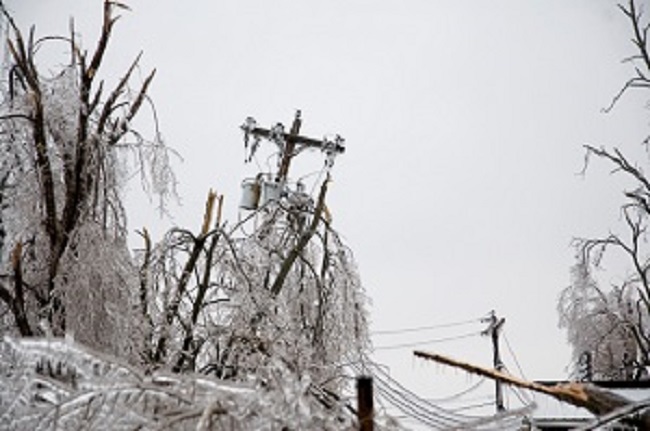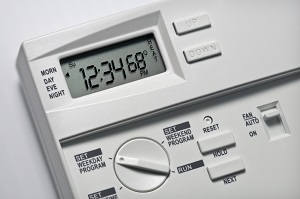
Do you know what the scariest part was about living before the industrial revolution? It wasn’t diseases like cholera, smallpox or the bubonic plague. It wasn’t lawlessness, war or lack of medical knowledge. It wasn’t even difficulty of communication. Despite what your history books would have you think, these really weren’t everyday concerns. They were more… weekend diversions, here and gone, if they even affected a person at all.
No, the really awful part about living in the past was an annual menace, killing without care or remorse, taking people in their prime, but especially preying on the young, the sick and the elderly. Maybe you’ve heard of the immortal white demon of which I speak. His name? Winter. (shudder)
But since the dawn of the modern age, Winter’s constricting grip has been loosened just a little bit. A hero has stepped forward to battle the beast so that we can happily go about our day. We call this hero Central Heat (CH)!

CH stands boldly between us and icy death, with no regard for his own safety, holding Winter’s forces back from our homes. But at what cost? What price do I pay for the ability to sit in my Iron Man t-shirt and shorts in February?
How Much Energy Do I Use for Heating?
Now that’s a tough question. Before we can really figure out how much we’re paying CH to defend us, we have to know how much we’re paying his band of loyal mercenaries: the Utilities Company. So, to figure it out, I offer myself up as an example (probably of what not to do).
I have a big, old house. It was built in 1924, and it’s seen a lot of ill use over its nine decades of life. As such, it’s pretty leaky, and it’s difficult to heat. Because of that, last winter, I used 759 CCF (100 cubic feet) of natural gas to heat my humble abode. That translates to 22,244.09 kWh of energy. Holy crap.
Hang on. Before you completely freak out on me, take into account that I have roughly 2100 square feet of floor space, which means that it takes just about 11 kWh per square foot per year (ft2a). That sounds a little better, right.
As a matter of fact, according to
this article at
ShrinkThatFootprint.com, that’s actually toward the low end of the spectrum. So please stop sending those hurtful emails.
What does Natural Gas Heating Do to the Environment?
Natural gas is clean, right? It produces
something like up to 60 percent less CO2 than coal when it’s burned efficiently. That’s good, right?
HA! Click that link up there and keep reading. Just because we burn it efficiently doesn’t mean it was delivered efficiently. Faulty pipe systems allow that precious natural gas to leak out into the atmosphere. And, in case you didn’t know, natural gas is just the non-scary term for methane.
Methane
made up about 9 percent of all greenhouse gas emissions in the United States in 2012. While that may seem like a low number, compared to CO2’s 82 percent, you can’t really go by percent alone. Methane is a much more effective greenhouse gas than CO2 – 21 times as effective. So, that mouse-sized portion of emissions turns into the lion’s share of heat-trapping capability. Even when we dress it up with a natural-sounding word, methane is terrifying.
What does Electrical Heating Do to the Environment?
I know what you’re thinking. “You’re right! You’re so smart and handsome!” (Thank you.) “I’d better get rid of my gas heater and switch to electrical!”
Not so fast, dear, sweet reader. Because electricity… whoa.
Okay, so it’s time for me to let you in on a little secret. I fudged my numbers a little bit. My second floor is actually converted attic space, and there are no ducts up here. So the beautiful, clean(ish) natural gas that heats my first floor doesn’t really extend to level two. To keep the kids from waking up as popsicles, we have to compensate with electric heaters.
Let’s just say that these heaters, on the lowest setting, and running constantly, use 750 watts of power each hour. That’s 0.75 kWh. So three of them, each day, burn through 54 kWh. Over the three months that it’s cold enough to keep them running, that makes my upstairs energy consumption an additional 4860 kWh (roughly).
In order to get to me, that electricity has to be produced by a plant that probably burns either coal or natural gas, since there are no dammed rivers in my area. Burning coal sends approximately
two pounds of CO2 into the atmosphere per kWh. Natural gas comes in at about 1.25 pounds. So, for my electrical adventures, I stamp down a footprint of between 6,000 and 10,000 pounds of CO2 belched into the air you breathe each year. Sorry.
Add that to the burning of natural gas for heat (roughly 27,000 pounds CO2 released), and I produce, on the high end, 37,000 pounds of CO2 each year just to keep warm. Let the hurtful emails resume.
How Can You Help?
Now, remember that my numbers are high on account that I have an old house with walls made of Swiss cheese. Your numbers are probably lower, but I encourage you to figure out how much energy you’re using to heat your own house. That’s the first step to fixing the problem.
Step two is to turn the thermostat down. Lowering it by just two degrees can drop your heat-related carbon emissions by
up to 6 percent. That’s not too shabby, especially when you consider that it saves you considerable green. Gas ain’t cheap.
Step three is to insulate. If you live in a modern home, chances are it’s pretty well-insulated already. But there is always room for improvement. If you live in a Bronze Age mansion, like yours truly, chances are insulation wasn’t invented when it was built. Either way, updating the insulation will pay off in the long run, both financially and environmentally. Good insulation can save between 2 percent and 15 percent on your CO2 budget, and 20-30 percent on your utilities budget.
Winter is a harsh foe, but Central Heat is pretty good at disarming his opponent. Still, as in any war, it’s always important to make your efforts sustainable. Going all-out may secure victory in the short-term, but it almost never works out in the long run.
I, for one, would like to keep Winter in his place for as long as we physically can. To do that, we have to use our resources wisely. I’m going downstairs right now to lower my thermostat.
This was by no means an exhaustive list of heat saving ideas. How do you stay green while keeping that white-bearded scoundrel out of your house? Give us your best tips in the comments below.
 Do you know what the scariest part was about living before the industrial revolution? It wasn’t diseases like cholera, smallpox or the bubonic plague. It wasn’t lawlessness, war or lack of medical knowledge. It wasn’t even difficulty of communication. Despite what your history books would have you think, these really weren’t everyday concerns. They were more… weekend diversions, here and gone, if they even affected a person at all.
No, the really awful part about living in the past was an annual menace, killing without care or remorse, taking people in their prime, but especially preying on the young, the sick and the elderly. Maybe you’ve heard of the immortal white demon of which I speak. His name? Winter. (shudder)
But since the dawn of the modern age, Winter’s constricting grip has been loosened just a little bit. A hero has stepped forward to battle the beast so that we can happily go about our day. We call this hero Central Heat (CH)!
Do you know what the scariest part was about living before the industrial revolution? It wasn’t diseases like cholera, smallpox or the bubonic plague. It wasn’t lawlessness, war or lack of medical knowledge. It wasn’t even difficulty of communication. Despite what your history books would have you think, these really weren’t everyday concerns. They were more… weekend diversions, here and gone, if they even affected a person at all.
No, the really awful part about living in the past was an annual menace, killing without care or remorse, taking people in their prime, but especially preying on the young, the sick and the elderly. Maybe you’ve heard of the immortal white demon of which I speak. His name? Winter. (shudder)
But since the dawn of the modern age, Winter’s constricting grip has been loosened just a little bit. A hero has stepped forward to battle the beast so that we can happily go about our day. We call this hero Central Heat (CH)!
 CH stands boldly between us and icy death, with no regard for his own safety, holding Winter’s forces back from our homes. But at what cost? What price do I pay for the ability to sit in my Iron Man t-shirt and shorts in February?
CH stands boldly between us and icy death, with no regard for his own safety, holding Winter’s forces back from our homes. But at what cost? What price do I pay for the ability to sit in my Iron Man t-shirt and shorts in February?